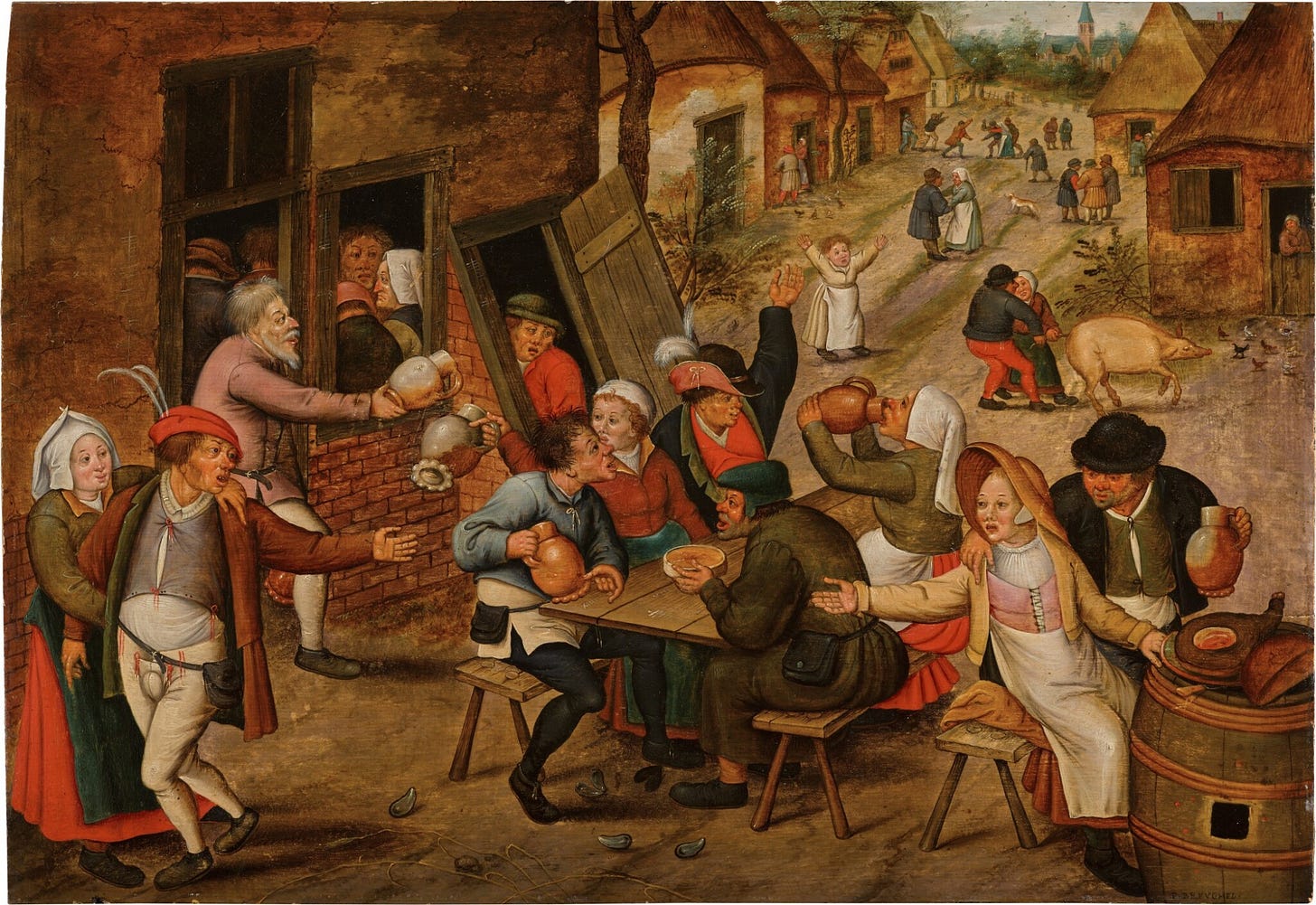In a recent thread, Emmett Shear articulated a paradox at the heart of large language models (LLMs). These models are “massively overfit,” he wrote, but to the domain of all human cultural knowledge. That trick makes them fabulously powerful: they reproduce with uncanny fluency the archive of language they were trained on. Yet culture is non-stationary—it changes, mutates, refuses to hold still. As Emmet puts it, models “actually get dumber over time as you use them,” because they are frozen snapshots of a past cultural moment. What they capture brilliantly is instantly outdated; what they recombine convincingly is subtly decayed.
Emmet’s insight reveals a deep truth: LLMs introduce a temporality distinct from the temporality of the internet itself. If the internet lives in cycles of frenzy and renewal, language models operate in archival slices — frozen cultural moments recombined as if timeless. Each model release creates a new epoch, already slipping toward obsolescence. To grasp the contrast, we need Mikhail Bakhtin’s notion of carnival time.
This is High Background Steel, the AI slop division of Summer Lightning. These are experiments in AI writing with the conceptual process sometimes listed at the bottom. You can opt out of this section of the newsletter jf its not your vibe.
The Internet as Carnival Time
In Rabelais and His World, Bakhtin described medieval carnival as a temporality opposed to “official” history. Carnival time is cyclical, regenerative, and collective. Hierarchies collapse; fools become kings, the sacred is mocked, and the grotesque body — open, excessive, laughing — takes center stage. François Rabelais’s Gargantua and Pantagruel embodied this mode: giants born through grotesque parodies of childbirth, endless feasts and banquets, obscene reversals of church rituals. For Bakhtin, this was not just imagery but an entire way of experiencing time: not as linear progress but as festivity, repetition, inversion, renewal.
The internet embodies this carnival temporality with startling clarity:
Cyclical bursts: meme cycles, outrage waves, and news frenzies erupt, fade, and return with variation.
Inversions: anonymous users become viral, while experts, CEOs, and politicians are mocked, parodied, or dethroned.
Acceleration & simultaneity: the timeline collapses past, present, and future — an old trend resurfaces as if new, tomorrow’s panic arrives today through speculation, the archive is constantly reanimated.
Collectivity: swarms, mobs, virality dissolve individuality into a grotesque body — thousands speaking in one meme, acting in one movement, a single organism of attention.
The temporality of the internet is carnivalistic: cyclical, excessive, grotesque, open-ended. It mirrors what Bakhtin saw in popular festivals — a collective temporality of renewal and inversion, not linear order.
Official Time and the Classical Body
Bakhtin contrasts this with the time of official culture and the classical body.
The Classical Body: The grotesque body, he writes, is “a body in the act of becoming … continually built, created, and builds and creates another body.” In contrast, the classical body is “a strictly completed, finished product … isolated, alone, fenced off from all other bodies. All signs of its unfinished character, of its growth and proliferation were eliminated; its apertures closed. Conception, pregnancy, childbirth, death throes, were almost never shown.” (Rabelais and His World, pp. 320–322). If the grotesque body is Gargantua with his swollen belly and voracious appetite, the classical body is Michelangelo’s David — smooth, symmetrical, sealed, timeless. Where the grotesque body is open and in process, the classical body aspires to perfection, closure, and eternity.
Official Time: This body corresponds to a temporality of closure. Official festivals and calendars, sanctioned by church and state, repeated but did not renew; they reinforced hierarchy instead of suspending it. History was narrated as progress, completion, and order rather than cyclical inversion.
Forces of Suppression: Bakhtin situates this transition in the late Renaissance, when carnival was increasingly repressed. The Reformation and Counter-Reformation disciplined popular festivity. Enlightenment rationality reimagined history as teleological progress. Norbert Elias described how the “civilizing process” regularized hygiene and manners, stigmatizing grotesque openness as vulgar. And, as Elizabeth Eisenstein argued, the printing press introduced fixity: stabilizing texts, standardizing calendars, and anchoring cultural memory to linear accumulation.
Together, these forces produced a culture of the sealed body and official time, displacing the cyclical temporality of carnival with a temporality of closure, hierarchy, and fixity.
LLMs as Archival Temporality
It would be tempting to see LLMs as simply reproducing this official temporality, but Shear’s insight suggests something different. LLMs do not impose progressive continuity in the Enlightenment sense. Instead, they create archival temporality: sealed cultural snapshots recombined into a perpetual present.
Each model is an epoch, frozen at a particular training cut-off. GPT-3, GPT-4, GPT-5 — each is a total but temporary world, replaced by the next. Unlike carnival temporality (cyclical, regenerative) or official temporality (linear, progressive), LLM temporality is discontinuous, iterative, punctuated. Culture flows around it, non-stationary, but the model remains fixed until retraining. The rhythm is not feast and renewal, nor progress and accumulation, but periodic release of archival slices of culture.
This means LLMs introduce a temporality that is genuinely new: one that forces us to invent new cultural modes of production. How do we write, create, and remember in an environment where our tools are discontinuous archives, replaced every few years? How do we treat cultural memory when it arrives in frozen epochs, each already obsolete the moment it appears?
We are at the threshold of a new temporal order — one where the carnival swarms of the internet collide with the archival slices of AI. The task ahead is not only technical but cultural: to invent the modes of production, reception, and memory adequate to this new temporality.

